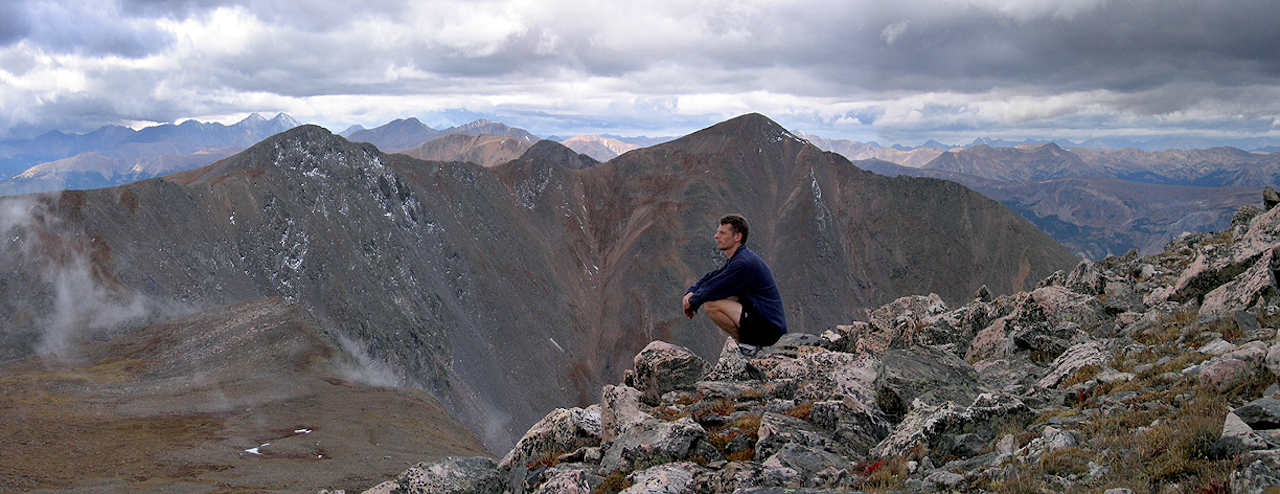Altitude training benefits everyone
Whatever the altitude, the proportion of the different gases that make up air remain the same – just under 21% oxygen, 78% Nitrogen and 1% trace gases. What does change at altitude is the air density. This means that the higher the altitude, the fewer oxygen molecules there are in a given volume of air. This in turn means that there are fewer oxygen molecules to be transferred into the bloodstream via the lungs.
At the higher elevation of Estes Park for example (7,500 feet), there is an approximate 5% reduction in the percentage of oxygen in the air compared to sea level, an effective reduction of around 25% in available oxygen.
The well-documented physiological effects of specific training, or just being active, at altitude, cited by Edmund R. Burke, Ph.D., University of Colorado at Colorado Springs, include:
- Increased natural hormone erythropoietin (EPO) production, which in turn increases red blood cell mass for delivering oxygen to muscle cells and converting it into energy.
- A boost in total blood volume to move oxygen more efficiently through your bloodstream.
- An increase in V02 max-the maximum amount of oxygen the body can convert to work, giving you more stamina for the long haul.
- Cranked-up hematocrit levels to provide a greater percentage of cells carrying oxygen.
- Elevated capillary volume, creating more blood pathways to muscle cells for improved muscle oxygenation.
- A higher volume of mitochondria–the powerhouses in cells that help your body turn oxygen into energy.
- An increase in the lungs’ ability to exchange gases efficiently – so that every breath you take more oxygen gets into the bloodstream.
Ground breaking research by Dr. Ben Levine and Dr. Jim Stray-Gundersen in the mid 1990’s demonstrated that to maximize the benefit of altitude training, you should live high and train lower. This has been used to great effect by a number of the World’s elite endurance athletes. Furthermore, it was also demonstrated that significant gains could be made by athletes of different ability levels – anyone can benefit from using this training principle, while at the same time you have an opportunity to discover a beautiful part of the USA and train with other athletes. What could be better!
Dr. Elizabeth Egan in her excellent book, Notes from Higher Grounds, shares that “the optimal altitude at which to live is somewhere between 2,100 m (6,900 feet) and 2,500 m (8,200 feet).” Estes Park is in that sweet spot between these two figures, at 7,500 feet above sea level.
Not only does Estes Park sit at the idea altitude to realize the maximum benefits from altitude training, you can also drop more than 2,000 feet in elevation within 25 minutes by traveling to Lyons, Colorado; highly beneficial for quality training. Very few places in mainland US can match this.
How to help with the acclimation process
There are a number of ways to help prepare your body for dealing with coming to higher altitudes. The three most important factors are to ensure you are rested, hydrated, and nourished. Very often athletes will mistakenly train harder before coming to altitude, and arrive depleted on many levels, and not maximize the opportunity to benefit from time at altitude. We recommend a taper process similar to a half marathon or longer race, where duration of training sessions is reduced from normal levels. You can read more on our advice on preparing for altitude with this PDF
Altitude sickness
Headaches are the primary system used to diagnose altitude sickness, although a headache can often be a symptom of dehydration, especially when you first arrive at higher altitudes. A headache occurring at 8,000 feet or above, combined with any one or more of he following symptoms, may indicate altitude sickness:
- Lack of appetite, nausea or vomiting
- Fatigue or weakness
- Dizziness or lightheadedness
- Insomnia
- Pins and needles
- Shortness of breath upon exertion
- Nosebleed
- Persistent rapid pulse
- Drowsiness
- Peripheral edema (swelling of hands, feet and face)
Taken from Wikipedia – see more information on their post here.

